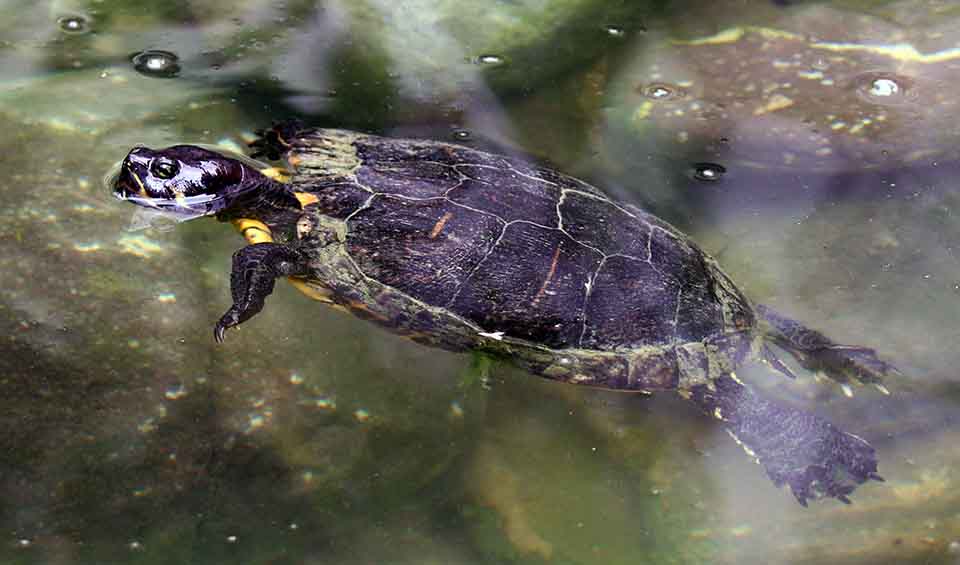A freshwater turtle native to Jamaica and parts of the Bahamas. This species is adapted to a warm, tropical environment and can be found in ponds, rivers, swamps, and lagoons—anywhere with slow-moving freshwater and plenty of basking spots.
The Jamaican slider has a carapace (top shell) that is generally olive to dark brown, often patterned with lighter stripes or blotches, while the plastron (underside) is usually pale yellow with darker markings. Its skin is dark with yellow or cream-colored stripes, and although it doesn’t have the red ear patch like its American cousin, it’s still an attractive turtle with a sleek, streamlined appearance.
Like other sliders, the Jamaican slider is semi-aquatic, meaning it spends time both in the water and basking on logs, rocks, or riverbanks to regulate its body temperature. It is omnivorous, feeding on a wide range of aquatic plants, insects, small fish, snails, and carrion. Juveniles tend to be more carnivorous, while adults consume more plant matter as they grow.
An interesting feature of this turtle is its adaptability. The Jamaican slider is capable of surviving in a variety of aquatic habitats and can cope with changes in water levels, temperature, and food availability. It’s also relatively shy and quick to dive into the water when startled, which helps it avoid predators such as birds, large fish, or invasive mammals.
Unfortunately, the Jamaican slider faces several conservation challenges. The most significant is competition and hybridization with invasive red-eared sliders, which have been introduced to Jamaica through the pet trade. These non-native turtles often outcompete the Jamaican slider for food and basking space, and they can interbreed with them, threatening the genetic integrity of the species.
Distribution
 Bahamas
Bahamas Jamaica
JamaicaAnything we've missed?
Help us improve this page by suggesting edits. Glory never dies!
Suggest an editGet to know me
Terrestrial / Aquatic
Altricial / Precocial
Polygamous / Monogamous
Dimorphic (size) / Monomorphic
Active: Diurnal / Nocturnal
Social behavior: Solitary / Pack / Herd
Diet: Carnivore / Herbivore / Omnivore / Piscivorous / Insectivore
Migratory: Yes / No
Domesticated: Yes / No
Dangerous: Yes / No




